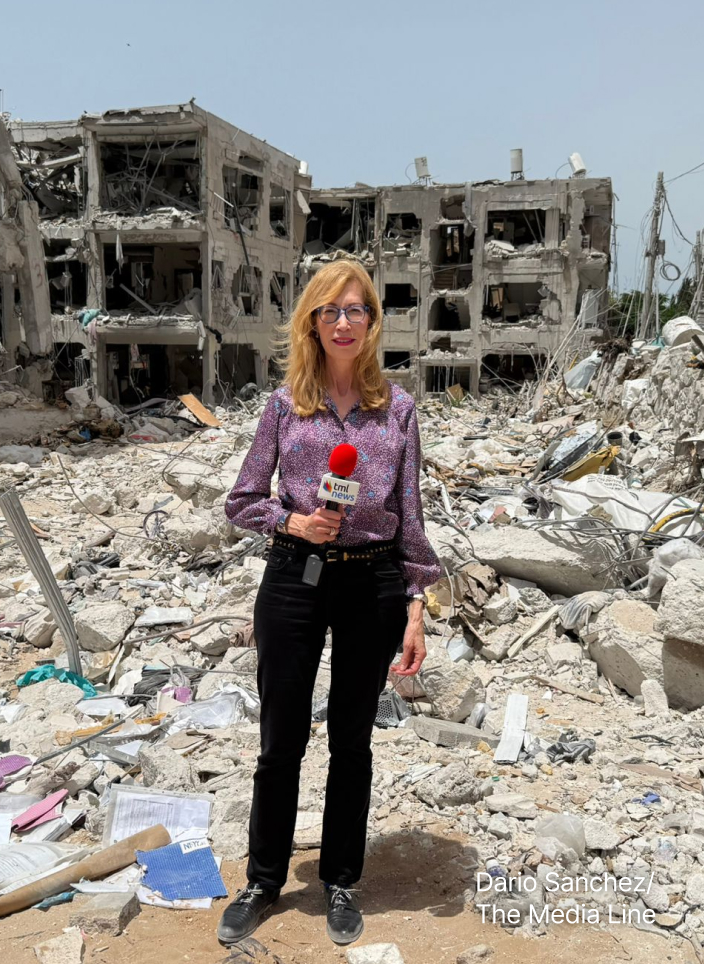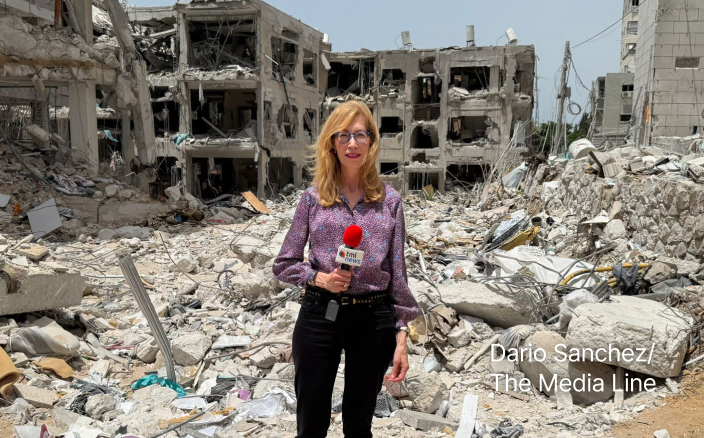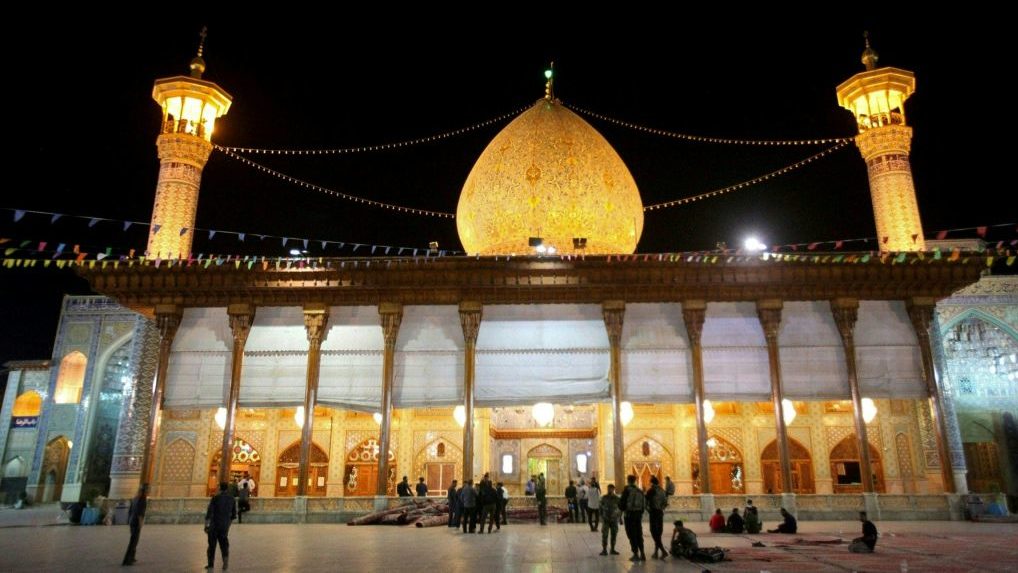Was ISIS Really Behind the Attack on a Shiraz Religious Shrine?
Some blame the attack that killed 15 pilgrims on the Iranian regime, saying it is an excuse to crack down on the protests currently sweeping the Islamic republic
The Islamic State in Iraq and Syria, or ISIS, has claimed responsibility for an attack on a religious shrine in the southern Iranian city of Shiraz that killed 15 people and wounded 19 others. The attack on Wednesday is the first such incident in Iran since June 2017. The last such attack in Shiraz itself was in April 2008, when a bomb planted in a mosque killed 14 people.
The attack on the Shah Cheragh shrine came amid a series of demonstrations in most Iranian cities, sparked by the death of Mahsa Amini on September 16 while in the custody of the Iranian morality police for not wearing her hijab correctly.
The Iranian state news agency IRNA reported that three gunmen opened fire on pilgrims visiting the shrine, while ISIS claimed responsibility for the incident through an account on the Telegram application.
Despite the suspicions still surrounding the incident and the lack of government investigations, regime newspapers, such as Kayhan, took the initiative on Thursday to link the ongoing nationwide protests with the terrorist incident, running a front-page headline that read: “Look for terrorists among the rioters.”
Kayhan, which is close to the Iranian government, accused Israel and Britain of causing the Shiraz incident through media supported by these countries, and the Iran International Persian-language news television channel headquartered in London accused the opposition of contributing to fueling the situation in Iran by supporting the popular protests and demonstrations throughout the country.
Iranian President Ebrahim Raisi promised a “quick and harsh” response, saying that “riots” during the protests were preparing the ground for such “terrorist” attacks. Iranian authorities said that only one terrorist was involved, and that he was not Iranian, and state television also reported the arrest of a single person. One report said he was “a terrorist linked to takfiri groups,” which refers to Islamist extremists who view other Muslims as non-believers.
The United Nations, Gulf countries – including Bahrain and the United Arab Emirates, and European countries condemned the massacre at the shrine, affirming their support for the Iranian people, and their opposition to all terrorist organizations. No official statements were issued by the US State Department, which instead issued more statements in response to the killing of Mahsa Amini and the ongoing protests.
Al Jazeera, the Qatar-based news channel, cited the governor of Shiraz as saying that one of the gunmen in the shrine attack was a 30-year-old Bahraini, while Iranian authorities denied this. Bahrain’s Interior Ministry issued a statement denying the allegations reported on Al Jazeera, accusing it of fabricating accusations and lies against Bahrain.
There will be more repression and violence against the demonstrators under the pretext of eliminating ISIS, and you will see this very soon
Iranian activist Mohammad Gharawi, director of the New Generation Media Center, told The Media Line that “ISIS has reconciled with those who want to take off the veils of Iranian women, and it is now taking revenge for the fact that Iran contributed to its elimination in Iraq and Syria.”
Give the gift of hope
We practice what we preach:
accurate, fearless journalism. But we can't do it alone.
- On the ground in Gaza, Syria, Israel, Egypt, Pakistan, and more
- Our program trained more than 100 journalists
- Calling out fake news and reporting real facts
- On the ground in Gaza, Syria, Israel, Egypt, Pakistan, and more
- Our program trained more than 100 journalists
- Calling out fake news and reporting real facts
Join us.
Support The Media Line. Save democracy.


He added, “We are facing Western countries that have agreed with us, the United States that supports ISIS and supports riots and sabotage to eliminate the Islamic State in Iran, but we are on the lookout for them, and this incident will not pass easily.”
“The Iranian security was able to arrest the perpetrator, and within the days all the details will be announced, and the facts and those behind them will emerge,” he said.
Maryam Rajavi, the president of the National Council of Resistance of Iran, tweeted her condolences to the people of Shiraz and to all the Iranian people “in the wake of the shocking and inhuman catastrophe” of the massacre of innocent pilgrims in the Shah Cheragh – the shrine of Ahmed bin Musa bin Jaafar, an ancient Shiite imam.
Ali Motahari, a former Iranian parliamentarian and now a political activist, told The Media Line that the “ISIS attack on Iran represents a new wave of terrorist operations against it, because it encourages many other terrorist organizations to target them, given the state of demonstrations and riots in the country.”
He added: “The ISIS ideology is based largely on hostility to the Shiites, who are protected by Iran, and therefore it took advantage of the difficult period that Iran is currently going through to carry out terrorist operations that would bring it back to the arena again. It serves the Western and Israeli agenda.”
He said that “Israel’s targeting of Iran is clear, and therefore it is not surprising that Israel has used the organization to carry out such operations.”
The Iranian opposition website, the People’s Mujahedin, appears to doubt the Islamic State’s involvement, saying that it “questions whether ISIS committed the crime until proven otherwise.”
A spokesman for the organization, who declined to be named, told The Media Line that the “Iranian regime is behind this crime, to prevent further demonstrations against the Iranian regime.”
“As is the case in Iraq, the more the crisis intensifies on the pro-Iranian government, and the greater the dispute between Iran’s agents in Iraq, a terrorist bombing took place, and it appeared as if ISIS had carried it out, but the truth is the opposite,” he continued, adding: “The Quds Force published a 30-second video on its Telegram channel, claiming that this was the moment the attack began, which raises more doubts about the Iranian regime’s narrative.”
The spokesman told The Media Line that the “current Iranian regime knows that it will fall, and despite all the repression it exercises against the Iranian people, the people continue their uprising against this repressive regime. Therefore, this operation went out to try to calm the street, as if there are enemies against whom we must stand together.”
“There will be more repression and violence against the demonstrators under the pretext of eliminating ISIS, and you will see this very soon,” he asserted.
Sufian Samarrai, an Iraqi journalist and political activist, tweeted: “Sources from Iraq say that the Iranian terrorist regime is operating ISIS cells in Anbar and on the Saudi border.”
The tweet continued: “The regime is trying to shuffle the cards again,” accusing former Iraqi Prime Minister Nouri al-Maliki of taking over the reins of power through his stepson Shi’a, a reference to the current Prime Minister Muhammad Shi’a Al-Sudani, “taking advantage of the lie that the Shiraz terrorist attack was carried out by the gangs of the Safavid (dynastic family that ruled over modern-day Iran from 1501 to 1736) entity on a Shiite shrine, accusing the takfiris of it.”
Mohammad Al-Ahwazi, an expert on Iranian affairs, told The Media Line: “ISIS has not carried out many operations in Iran, even though Iran’s area is vast, and despite its claims to fight against the organization.”
“When the regime of Bashar al-Assad was about to fall, Iran used ISIS as a pretext for its entry into Syria to fight terrorism, and today Iran will also use ISIS as a pretext to eliminate the uprising of the Iranian people,” he said.
“ISIS’ operations in Iran since the inception of the organization do not exceed 10 attacks. Its re-emergence in this situation is nothing but a lie from the Iranian regime,” he concluded.

